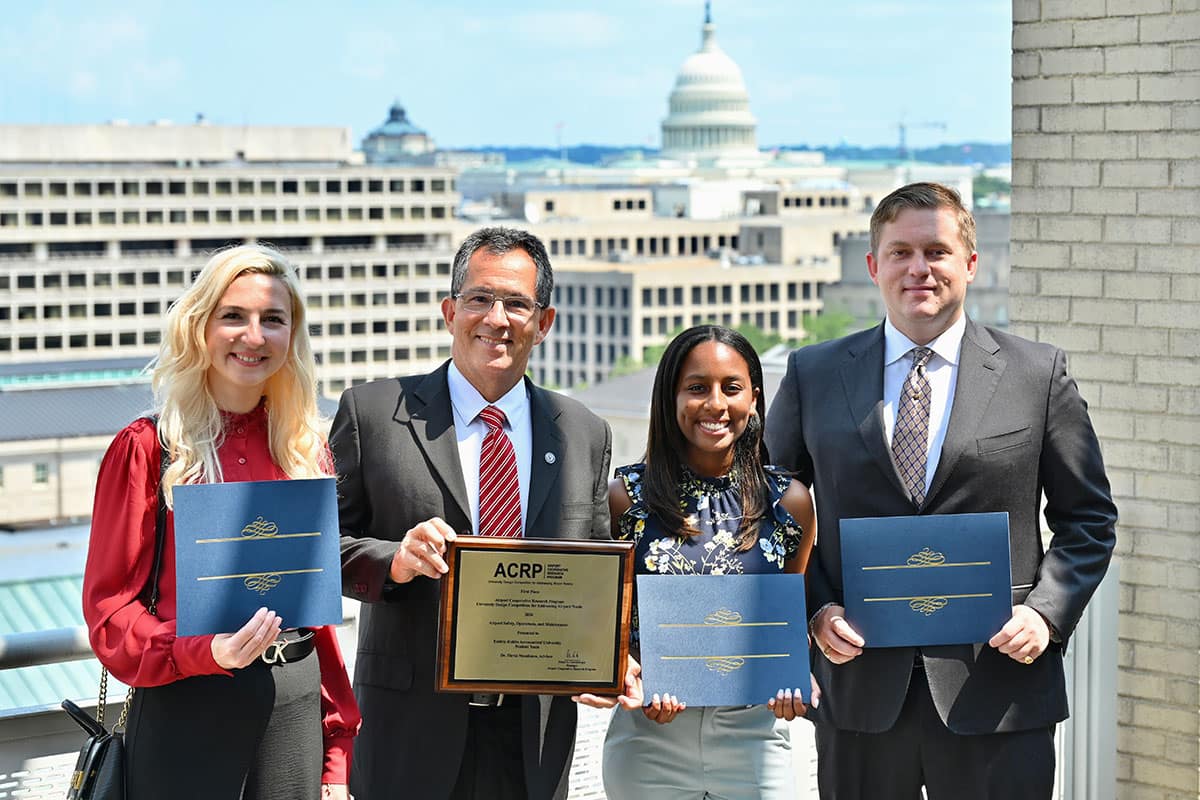‘Game-Changer’: Drones Can Reduce Wildlife Strikes at Airports, According to Award-Winning Eagle Research

To avoid dangerous and costly collisions between wildlife and aircraft, airport biologists are constantly monitoring nearby animal populations and attempting to reduce features that might attract hazardous species to the airport.
Current methods of investigation could be greatly enhanced using uncrewed aircraft systems (UAS), or drones, however, according to a team of student researchers from Embry-Riddle Aeronautical University, whose project on the topic recently won first place at a national competition.
“Drones not only make the process more cost-effective but also significantly enhance the ability to identify different wildlife species simultaneously,” said Anna Golendukhina, an Aviation master’s student and one of the authors of the research. “This is especially important because it helps us better understand how these animals interact with their habitats, which can be crucial for ensuring airport safety.”
The team’s project won first place in the Airport Cooperative Research Program’s Student Research Design Competition held this summer in Washington, D.C.
Because drones can access hard-to-reach areas, cover ground quickly and use various camera sensors to gather information about local environments, the technology is perfect for collecting information about wildlife and their natural habitats in challenging environments.
“[Drones] make the entire process of wildlife data collection not only more thorough but also much safer for the experts involved,” Golendukhina added. “We strongly believe the safe application of UAS technologies could be a game-changer — improving safety, saving money and giving airport operators a clearer picture of how wildlife interacts with airport environments.”

Aerial images like these can offer airport biologists a new perspective on nearby wildlife without having to travel through thick vegetation or disturb the animals in their natural state in the process. (Photo: Raymond Ayers)
Eagle Eye View
To evaluate the strengths and weaknesses of the UAS method, the team collected data on a farmland near the Daytona Beach International Airport, which is next door to Embry-Riddle’s Daytona Beach Campus. During these trips, they followed the FAA’s requirements regarding wildlife hazard assessment — including identifying local wildlife species and their numbers, noting the daily and seasonal occurrences of these species, and identifying nearby features that could attract wildlife.
“Due to the unique versatility and maneuverability of UAS, we were able to achieve aerial perspectives, even in areas with challenging terrains, such as wetlands, forests and coastlines,” Golendukhina said. The team was also able to track animals at night using thermal infrared cameras, identify animals that do not travel in groups and spot birds that fly at higher altitudes — all tasks that prove more difficult using traditional methods.
The team also interviewed veteran industry experts — such as former FAA Administrator Capt. Billy Nolen (‘07), an Embry-Riddle alumnus who now serves as chief safety officer at Archer Aviation; David Castaneda, airport wildlife supervisor at Charlotte Douglas International Airport; and Cathy Boyles, wildlife program manager at Dallas Fort Worth International Airport — each of whom offered valuable feedback on their work.
In addition to Golendukhina, the Embry-Riddle team included Aviation master’s students Savanna Box, Nicholas Buckalew, Raymon Ayres and Jose L. Cabrera.
“These connections to accomplished industry executives are incredibly powerful,” said Dr. Flavio Mendonca, associate professor of Aeronautical Science and the team’s faculty mentor. “Our students quite literally learned from the best, and they expanded their networks in the process. Pairing those industry connections with the hands-on experience each of them gained throughout this project will make them increasingly attractive to future employers. That’s the real impact of real-world research projects like these, beyond the team’s very impressive competition win.”

 Mike Cavaliere
Mike Cavaliere